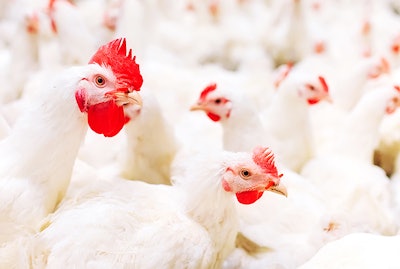
A new flow cytometry technique could make it easier to diagnose and characterize the coccidiosis species infecting a poultry flock.
“We have developed a non-antibody-based technique that can be used in the speciation of different coccidian parasites affecting broilers. Traditionally, flow cytometry uses certain fluorescently-labelled antibodies for detection and characterization of various cell types in immunology research,” explained Ravi Kulkarni, Assistant Professor, Poultry Health Management at North Carolina State University.
“We have come up with another way of application where we can differentiate different species of Eimeria based on their size and granularity of the oocysts.”
Coccidiosis is caused by protozoan parasites belonging to Eimeria genus. Spread of the disease occurs quickly, typically in less than a week. Coccidiosis primarily affects young chickens and can affect bird performance, including egg production.
Current methods for characterizing between species of Eimeria are labor intensive, time consuming and somewhat unreliable
What is flow cytometry?
Flow cytometry is a tool that can rapidly detect and characterize cells in a population based on their light scatter and fluorescence properties.
“Flow cytometry was originally developed as a tool for immunological investigations. Essentially, it identifies various cell types that are present in the mixture of cells,” said Kulkarni.
In simpler terms, flow cytometry is a tool to help sort between different cells types easily.
“At poultry farms, hens lay eggs. These eggs are placed into a machine that sorts them quickly by weight, for example, medium, large and extra-large. Similarly, flow cytometry sorts the cells into different categories, which helps us identify the different species of coccidia,” said Rocio Crespo, Professor, Poultry Health Management and study co-investigator.
More about the project
The researchers were able to successfully speciate and enumerate four Eimeria species (E. acervulina, E. mitis, E. maxima, and E. tenella) using simple light scatter data plotting with a flow cytometer analyzer.
“At this stage, what we have done is to figure out how best to use the flow cytometry method for counting and speciating the Eimeria species affecting broilers. In the future, we would like to characterize further the sporulation status of the Eimeria as well as extend our work in turkey coccidia research using flow cytometry application,” Kulkarni and Crespo said.
The research project was funded by the U.S. Poultry & Egg Association.
Like what you just read? Sign up now for free to receive the Poultry Future Newsletter.

















